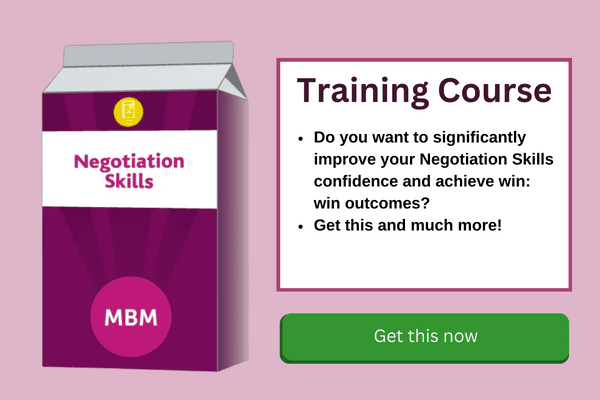Mastering Price Negotiation for Lasting Success in Business
In the dynamic business world, where every decision influences the bottom line, the question isn’t whether you negotiate but how well you negotiate. Your ability to negotiate prices is more than a skill—it’s a strategic advantage. Have you ever wondered what differentiates a successful negotiation from a missed opportunity? In this article, we unravel the intricacies of negotiating prices tailored for professionals like yourself.
Whether you’re shaping the future of your workforce or managing the procurement pipeline, mastering negotiation isn’t just a choice. In fact, it’s a necessity. So join us as we explore the art of negotiating prices, where every deal is an opportunity and every negotiator is a master of their craft.
Why is Price Negotiation Important?

-
Navigating Deals With Skill
Price negotiation isn’t just about exchanging numbers. Actually, it’s a skilful process where both parties strive for a harmonious outcome. So what is a negotiated price? In the realm of negotiations, a negotiated price is the result of a mutual agreement reached between the parties involved. It reflects a compromise that satisfies both sides, striking a balance between value and terms.
Whether you’re a buyer or a seller, honing your negotiation skills is essential for navigating the complexities of deals. For buyers, clearly articulate your budget constraints and explore flexible terms that align with your financial goals. Sellers, on the other hand, can showcase flexibility by offering customisable packages that cater to diverse buyer needs.
-
Building Trust and Long-term Collaborations
Beyond the immediate exchange of goods or services, effective price negotiation builds trust and lays the foundation for lasting collaborations. Forging relationships goes hand-in-hand with negotiating.
Both buyers and sellers can take the initiative to understand each other’s perspectives, fostering a transparent and trustworthy partnership. Sellers can offer trial periods or pilot programs, allowing buyers to experience the value firsthand, and buyers can express their long-term commitment to secure favourable terms.
-
Do your learners come back from training and do nothing differently?
Sticky Learning ® is 7 times more effective than 1-day training courses. Plus, you will get a Chain of Evidence proving your Return on Investment. Discover soft skills training that changes behaviours long term.
Get Started Now
Adapting to Market Dynamics
Market dynamics are ever-shifting, and the ability to adapt is paramount. Stay informed about industry trends and adjust your negotiation approach accordingly. Whether it’s embracing dynamic pricing models, exploring creative solutions, or involving a neutral third party, being adaptable ensures relevance and success in a dynamic business landscape.
In essence, mastering price negotiation is a universal skill that empowers individuals and organisations. It’s about more than securing a favourable deal today. It’s about skilful navigation, building trust, and adapting to the ebb and flow of market dynamics. In the dynamic landscape of business and commerce, negotiation is the key to unlocking mutually beneficial outcomes for all involved.
Here are 7 key strategies to elevate your negotiation game.
#1- Prepare Well for Negotiations

-
Conduct In-depth Seller Research
Before diving into negotiations, take the time to thoroughly understand the seller’s pricing strategy. This involves examining their historical pricing patterns, product/service positioning, and any publicly available information about their pricing tactics. Consider factors like volume discounts, seasonal adjustments, or package deals that might influence their pricing decisions. This research lays the foundation for informed discussions and also positions you to negotiate effectively.
-
Set Clear Objectives and Defining Parameters
Clearly outlining your objectives is pivotal to successfully negotiating prices. Define what you want to achieve – whether it’s cost savings, added value, or specific contract terms. Setting clear parameters helps in maintaining focus during negotiations and ensures that both parties have a shared understanding of the desired outcomes. This clarity not only streamlines the negotiation process but also reduces the likelihood of misunderstandings down the line.
-
Understand the Seller’s Perspective
Approaching negotiations with a comprehension of the seller’s perspective is key. Above all, put yourself in their shoes to anticipate their concerns and motivations. Additionally, consider factors such as production costs, market competition, and any challenges they might be facing. Understanding the seller’s viewpoint allows you to tailor your negotiation approach accordingly, addressing potential obstacles and presenting solutions that align with their interests. Moreover, this empathetic understanding fosters a more collaborative negotiation environment. Consequently, it increases the likelihood of achieving mutually beneficial outcomes.
#2- Optimise Price Negotiations Through Effective Communication Strategies

-
Develop Strong Communication Skills
Communication lies at the heart of successful negotiations. Enhance your communication skills by focusing on clarity, conciseness, and active listening. Ensure that your messages are easily understood and that you can articulate your points effectively. Being a good communicator not only helps in expressing your needs but also in understanding the perspectives of the other party.
-
Build Rapport for a Positive Relationship
Establishing a positive relationship with the seller is a strategic move. Building rapport creates a foundation of trust and understanding. Begin by finding common ground, showing genuine interest, and also being open and respectful. A positive relationship contributes to smoother negotiations, as both parties feel more comfortable sharing information and working towards a mutually beneficial agreement.
-
Craft Persuasive Arguments
In negotiating prices, the ability to construct compelling arguments is a valuable asset. Support your position with well-reasoned and persuasive points. Clearly articulate the benefits of your proposal and how it aligns with the seller’s interests. Using data and relevant examples strengthens your arguments, making it more likely for the other party to see the value in your proposition. Crafting persuasive arguments is a skill that can tip the scales in your favour during negotiations.

#3- Leverage Data and Analytics in Negotiating Prices
-
Use Data to Support Your Position
In the world of negotiating prices, data serves as a powerful ally. Begin by collecting and analysing relevant data that supports your negotiating prices position. This could include market research, industry benchmarks, and historical performance data. Presenting concrete numbers lends credibility to your arguments and provides a factual foundation for your negotiation stance. By grounding your position in data, you not only bolster your case but also demonstrate a commitment to an objective and informed discussion about negotiating prices.
-
Employ Analytics for Cost-saving Opportunities in Negotiating Prices
Analytics can be a game-changer in identifying cost-saving opportunities when negotiating prices. Dive into the details of costs associated with the products or services under discussion. Utilise analytics to uncover areas where efficiencies can be improved or expenses reduced, adding weight to your negotiation prices position.
This not only strengthens your negotiation position but also opens avenues for creating mutually beneficial agreements. By presenting cost-saving insights during negotiating prices, you showcase a proactive approach to the negotiation table, emphasising collaboration and long-term value.
-
Negotiate Based on Facts and Figures
In the heat of negotiating prices, emotions can cloud judgment. However, relying on facts and figures provides a more rational and objective basis for decision-making in negotiating prices. Ensure that your negotiation is grounded in quantifiable data, steering clear of emotional arguments about negotiating prices.
This approach fosters a transparent and logical discussion, reducing the likelihood of misunderstandings and enabling both parties to reach agreements about negotiating prices that are rooted in the reality of the numbers. In negotiations about negotiating prices, the power of data is not just in its collection but in its strategic application to drive informed and pragmatic discussions.
#4- Secure Win-win Outcomes through Proactive Tactics in Negotiating Prices

-
Explore Collaborative Approaches for Mutual Benefit
In negotiating prices, a collaborative mindset can turn discussions into win-win scenarios. Prioritise mutual benefit by brainstorming innovative solutions and considering compromises that enhance the overall deal. This approach fosters a positive environment, setting the stage for successful pricing negotiations.
-
Create Value-added Propositions for Enhanced Deals
When negotiating prices, go beyond basic terms to create value-added propositions that elevate the deal. Identify areas where additional value can be incorporated without significantly impacting costs, such as extended warranties or bundled services. These propositions sweeten the deal for both parties, contributing to goodwill and long-term satisfaction. Value-added negotiations demonstrate a commitment to crafting agreements that go beyond the immediate transaction, establishing a foundation for enduring relationships.
-
Build Long-term Relationships With Sellers
View each interaction in negotiating prices as an opportunity to build a long-term relationship. Importantly, focus on understanding the seller’s priorities and concerns, working towards solutions that align with their business goals. By establishing trust and reliability over time, negotiators can secure more favourable terms in negotiating prices and also cultivate a willingness from sellers to consider their needs in future negotiations.
Building long-term relationships not only ensures advantageous deals in the present but also sets the stage for collaborative success in negotiating prices for years to come. Additionally, these sustained relationships contribute to a positive and cooperative negotiation environment, fostering mutual understanding and facilitating smoother interactions in the ever-evolving business landscape.

>> Negotiation Skills Ulitmate Guide <<
#5- Overcome Objections and Deadlocks in Negotiating Prices
-
Anticipate and Address Common Objections
In the process of negotiating prices, anticipating and addressing objections is a crucial skill. Identify common objections that may arise during discussions and prepare responses in advance. This proactive approach allows you to navigate objections smoothly, demonstrating preparedness and reinforcing the validity of your negotiation position. By addressing concerns before they become roadblocks, you maintain momentum in the negotiation process.
-
Implement Strategies for Breaking Deadlocks in Negotiations
Deadlocks can occur in negotiating prices, stalling progress and creating challenges. So implement effective strategies to break deadlocks and keep the negotiation moving forward:
#1 Take a Step Back:
Sometimes, stepping back from the specific point of contention allows both parties to gain perspective. For instance, consider discussing broader business goals or long-term partnerships to create a more collaborative atmosphere.
#2 Seek Compromises:
Look for areas where compromise is possible to find common ground. Instead of fixating on price alone, explore flexible payment terms, additional services, or extended warranties to reach a mutually satisfactory agreement.
#3 Bring in a Mediator:
Consider involving a neutral third party to facilitate discussions and provide fresh insights. This could be an industry expert or a professional mediator who can bring a new perspective to the negotiation table, helping to break deadlocks and move discussions forward.
-
Find Creative Solutions to Move Past Impasses
When negotiations hit an impasse, creativity becomes a valuable tool. Think outside the box to find alternative solutions that meet both parties’ needs:
#1 Brainstorming Sessions:
Engage in collaborative brainstorming sessions to generate new ideas and perspectives. For example, set up a joint meeting where representatives from both sides can freely share innovative suggestions to overcome challenges.
#2 Explore Non-monetary Benefits:
Consider including non-monetary benefits, such as extended warranties or additional services, to break the deadlock without compromising on price. An example could be offering free training sessions or priority support, adding tangible value beyond the monetary aspect.
#3 Focus on Shared Goals:
Redirect the discussion towards shared goals and objectives, allowing both parties to find common ground. For instance, if price becomes a sticking point, emphasise how a collaborative solution can lead to shared success. Creativity in negotiating prices can open up avenues for resolution that may not be immediately apparent.
#4 Pilot Programs:
Propose a pilot program or trial period for the product or service at a reduced cost. This allows the buyer to experience the value firsthand, potentially leading to a more agreeable pricing discussion after the trial period.
#5 Performance-based Pricing:
Consider tying pricing to performance metrics, where the cost is adjusted based on mutually agreed-upon performance indicators. This aligns the interests of both parties and provides an incentive for optimal collaboration.
#6 Joint Marketing Initiatives:
Explore opportunities for joint marketing initiatives that can enhance the visibility and success of both parties. This could involve co-branded campaigns or collaborative promotional efforts, adding value beyond the transaction itself. Creativity in negotiating prices can open up avenues for resolution that may not be immediately apparent.
Featured resource: Great Learning Guide
#6- Learn Effective Post-negotiation Strategies

-
Evaluate the Success of the Negotiation
After concluding a negotiation, it’s essential to evaluate its success. Reflect on the outcomes and also assess whether the objectives were met. Utilise key performance indicators (KPIs) to measure success, such as cost savings achieved, additional benefits secured, or adherence to timelines. This evaluation provides insights into the effectiveness of your negotiation strategies and informs future approaches.
Key Metrics for Evaluation:
- Cost savings achieved
- Additional benefits secured
- Adherence to timelines
-
Document All Agreements to Ensure Clarity
Clear documentation of agreements is crucial for preventing misunderstandings and disputes. Ensure that all negotiated terms and conditions are accurately recorded in a formal agreement. This document serves as a reference point for both parties and contributes to a transparent and trustworthy relationship.
Elements to Document:
- Agreed-upon pricing and payment terms
- Deliverables and timelines
- Any specific conditions or contingencies
-
Continuously Improve Negotiation Skills Through Feedback
Negotiation is an evolving skill, and continuous improvement is key to long-term success. Seek feedback from both internal and external stakeholders involved in the negotiation process. Analyse what worked well and identify areas for improvement. Embrace a learning mindset, attending training sessions or workshops to stay updated on the latest negotiation techniques.
Feedback Sources:
- Internal team members
- External counterparts
- Post-negotiation surveys
#7- Continuously Learn and Develop for Ongoing Growth

-
Invest in Training Programs for Negotiation Skills
Prioritising continuous learning, organisations invest in training programs to enhance negotiation skills. After all, these programs provide valuable insights to continuously Learn and Develop for Ongoing Growth to the latest negotiation techniques, communication strategies, and industry-specific nuances.
Not only do they equip negotiators with updated skills, but organisations also ensure their teams remain adept and competitive in the evolving landscape of negotiations. Additionally, these training programs foster a culture of continuous improvement, creating a learning environment where negotiators can stay updated on emerging trends and continuously refine their negotiation strategies for optimal success.
-
Learn From Past Negotiations to Refine Strategies
Reflection on past negotiations serves as a valuable source of learning. After all, analysing successes and challenges from previous experiences helps negotiators refine their strategies. This iterative process enables individuals to identify areas for improvement, adapt to different scenarios, and build a repertoire of effective approaches.
Not only does learning from the past ensure that negotiators bring evolving and informed tactics to each negotiation, but it also contributes to a continuous cycle of improvement. In doing so, negotiators remain dynamic and well-prepared, equipped to navigate diverse negotiation scenarios with resilience and expertise.
-
Encourage a Culture of Continuous Improvement
Creating a culture of continuous improvement in negotiation skills is essential for organisational success. Above all, encouraging open communication, feedback loops, and knowledge-sharing fosters an environment where negotiators feel empowered to continually refine their skills.
This cultural emphasis on growth ensures that negotiation practices within the organisation remain dynamic, responsive, and aligned with industry best practices. Additionally, this commitment to continuous improvement not only benefits individual negotiators but also contributes to the overall resilience and competitiveness of the organisation in the ever-evolving landscape of business interactions.
Conclusion
In conclusion, mastering the negotiation of prices requires a comprehensive approach. From understanding market dynamics to embracing technology, adapting to cultural nuances, and fostering continuous learning, the journey towards negotiation mastery is ongoing. By putting these insights into practice, negotiators can navigate the complexities of business interactions, aiming for successful and lasting outcomes in every deal.




